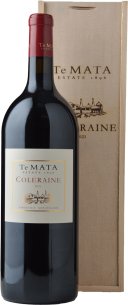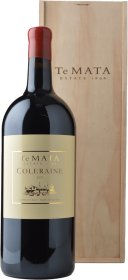Chateau Quintus Grand Cru St-Emilion
Chateau Clerc-Milon-Rothschild 5me cru classe
Chateau Calon-Segur 3me cru classe
With its name enclosed in a heart on the label, Chateau Calon-Ségur is a third-growth estate (3ème Cru Classé) in Saint-Estèphe. Firm and sturdy in style, Chateau Calon-Ségur is somewhat austere in its youth, possessing a prominent tannin structure that rewards extended cellaring over 10 to 20 years.
Château Pape Clement
Planted in 1300, the estate is the oldest planted vineyard in the Pessac-Léognan appellation, ranked among the Premiers Crus for red wine in the Classification of Graves wine of 1959.
Chateau La Conseillante
Alvaro Palacios Finca Dofi
Houghton Jack Mann Cabernet Sauvignon
One word - legend. Jack Mann served Houghton for a remarkable 51 consecutive vintages. His determination to create wines of intensity, elegance and regional character have inspired a generation of Australian winemakers to achieve great things. Simply one of this country's greatest Cabernets, this wine is not just single vineyard fruit, the selection process is so rigorous that often it is just a few rows from the Justin Vineyard. Such is the reverence for that great man - Jack Mann.
Te Mata Estate Coleraine Cabernet Sauvignon Merlot Cabernet Franc
TE MATA ESTATE Coleraine. Cepage may include Cabernet Sauvignon, Merlot, and Cabernet Franc. Hawkes Bay, New Zealand
Reschke Empyrean Cabernet Sauvignon
Coonawarra is regarded as Australia's premier region for Cabernet Sauvignon. The Reschke properties are located on the famous strip of 'terra rossa' soil in Coonawarra and has been owned by the family for almost 100 years. The fruit selected for Empyrean is the best on their 10.8 acre site and is only made in exceptional years.
Jim Barry The Benbournie Cabernet Sauvignon
This is the flagship Cabernet of the Jim Barry stable. Ripe black fruits combined with a beautifully distinct earth, leather aromas with hints of dried fruits and sweet mulch.
















